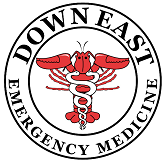Resuscitative Transesophageal Echocardiography in the Emergency Department
/We are extremely fortunate to have one of our fearless ultrasound leaders, Dr. Andrew Fried, lead us into the world of resuscitative transesophageal echocardiography at Maine Medical Center. In our recent grand rounds, he presented the latest cutting edge literature behind this technology and why its the right thing to do for our patients.
Read More


















